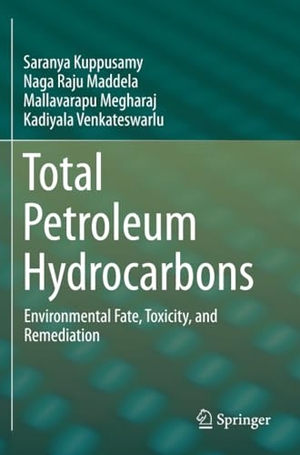Für statistische Zwecke und um bestmögliche Funktionalität zu bieten, speichert diese Website Cookies auf Ihrem Gerät. Das Speichern von Cookies kann in den Browser-Einstellungen deaktiviert werden. Wenn Sie die Website weiter nutzen, stimmen Sie der Verwendung von Cookies zu.
Cookie akzeptieren
Saranya Kuppusamy / Kadiyala Venkateswarlu / Mallavarapu Megharaj / Naga Raju Maddela
Total Petroleum Hydrocarbons
- Springer International Publishing
- 2020
- Taschenbuch
- 288 Seiten
- ISBN 9783030240370
The term ¿total petroleum hydrocarbons¿ (TPHs) is used for any mixture of several hundred hydrocarbons found in crude oil, and they represent the sum of volatile petroleum hydrocarbons and extractable petroleum hydrocarbons. The petrol-range organics include hydrocarbons from C6 to C10, while diesel-range organics are C10-C28 hydrocarbons. Environmental pollution by petroleum hydrocarbons is one of the major global concerns, particularly in oil-yielding countries. In fact, there are more than five million potentially contaminated areas worldwide that represent, in general, a lost economic opportunity and a threat to the health and well-being of humans and the environment. Petroleum- contaminated sites constitute almost one-third of the total sites
Mehr
Weniger
zzgl. Versand
in Kürze